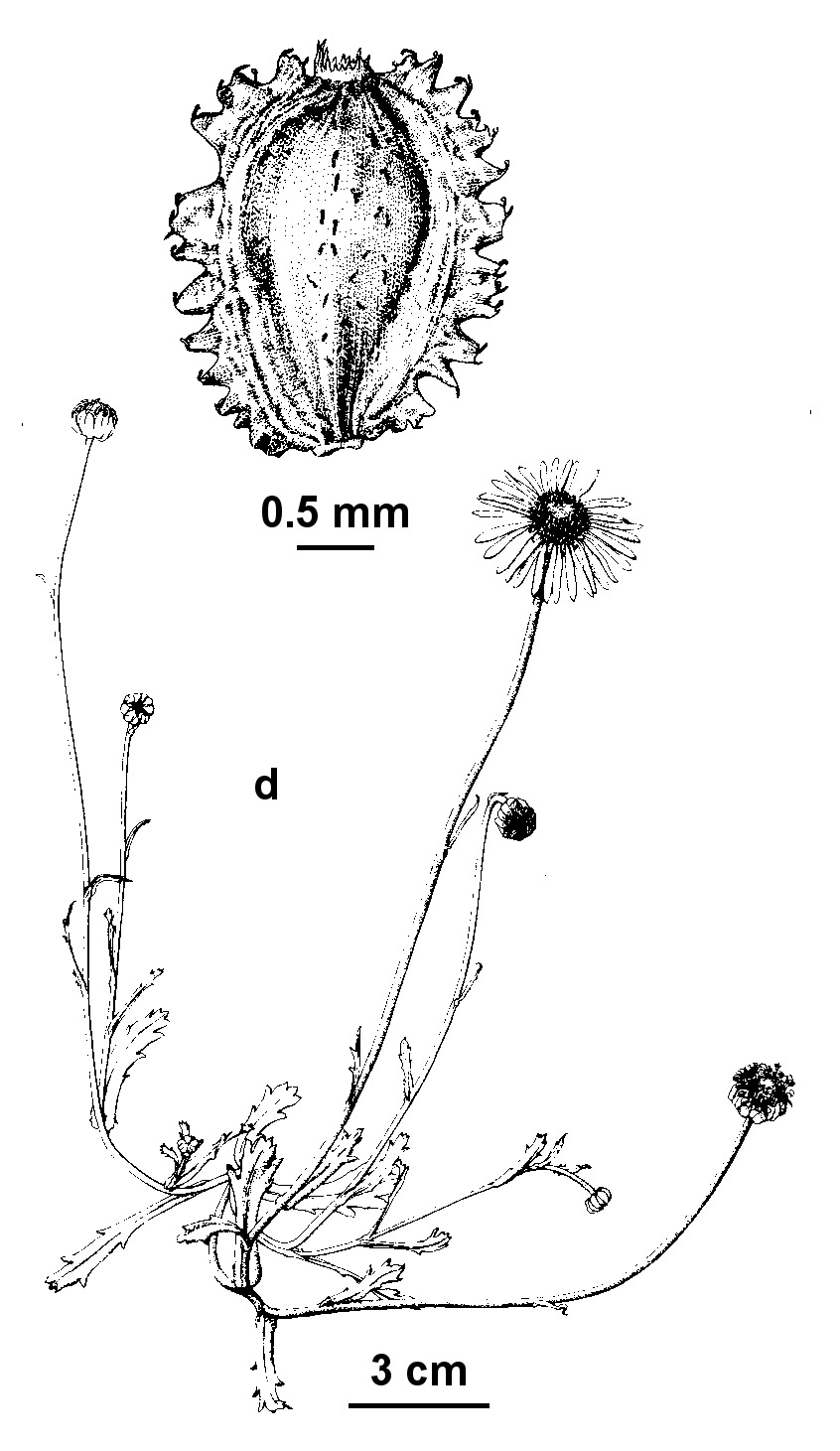Brachyscome cuneifolia
TateErect herb, branching from or near the base, 10–35 cm high. Leaves mostly rosetted at base, but some cauline, glabrous or with scattered glandular hairs, and sometimes a few cottony hairs; basal leaves spathulate or oblanceolate, 1.7–9 cm long, 5–15 mm wide, mostly with 3–11, shallow, straight-edged or rounded teeth or lobes; upper leaves often entire and c. linear. Flowering branches angular, glandular-hairy; bracts c. 16–24, c. 1-seriate, c. equal, elliptic to narrowly elliptic or obovate, 4.5–7 mm long, 1.3–2.3 mm wide, rounded to acutish, sometimes sparsely glandular-hairy, mainly green and herbaceous but margins and apex scarious and often purplish; ligules c. 10 mm long, mainly white but sometimes mauve. Cypselas obovate, 2.5–3.5 mm long, 1.5–2.5 mm wide, brown; lateral faces with scattered tubercles terminating in eglandular curved hairs, some glandular hairs may be present; wing-like margins dissected, with short, curved eglandular hairs; pappus c. 0.2–0.3 mm long, shorter than to barely exceeding apical notch. Flowers Sep.–Oct.
MuM, Wim, VVP, Gold, CVU, GGr, DunT, HNF. Also SA. Apparently rare and known from only a few localities in Victoria. Plants from woodlands on infertile, often sandy soils (e.g. Dimboola, Mt Arapiles, Wedderburn) are mostly tall (typically 25–35 cm high) with leaves 50 mm long or more that extend along the scape to near the capitulum while those from heavier, more fertile soils prone to waterlogging and supporting grassland or grassy woodland (e.g. Cressy, McKenzie Ck south of Horsham) are shorter (to c. 15 cm) with leaves all or mostly basal to c. 45 mm long. The latter form has sometimes been considered to comprise a possibly distinct entity (e.g. Salkin et al. 1995), but the morphological distinctions appear slight despite the apparently different habitat.
Short, P.S. (1999). Brachyscome. In: Walsh, N.G.; Entwisle, T.J., Flora of Victoria Vol. 4, Cornaceae to Asteraceae, pp. 835–859. Inkata Press, Melbourne.
 Spinning
SpinningSalkin, E.; Thomlinson, G.; Armstrong, B.; Courtney, B.; Schaumann, M. (1995). Australian Brachyscomes. Australian Daisy Study Group, Burwood, Victoria.

